germination
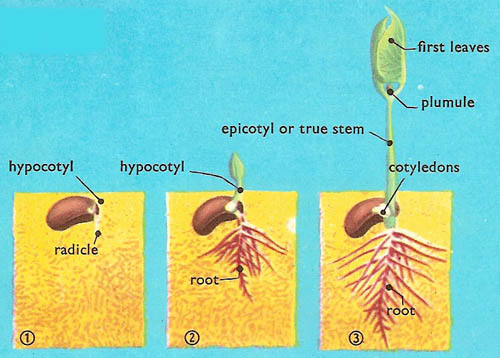
Hypogeal germination. 1. The seed of the haricot beam germinating. The radicle has broken through the testa and is growing downward. 2. The root develops, anchoring the seed, whole the plumule grows upward. 3. The cotyledons, which in this case contain the food-store, do not leave the ground, or they may appear just above it. From the hypocotyl the stem grows up and a pair of leaves develop. These are true leaves, not cotyledonsb.
Germination is the resumption of growth and development by a spore or plant embryo contained in a seed after a
period of reduced metabolic activity or dormancy.
Conditions required for germination include an adequate water supply, sufficient
oxygen, and a favorable temperature. Rapid uptake of water followed by increased
rate of respiration are often the first
signs of germination. During germination, stored food reserves are rapidly
used up to provide the energy and raw materials required for the new growth.
The embryonic root and shoot which break
through the seed coat are called the radicle and plumule, respectively.
There are two general forms of germination: hypogeal and epigeal (see below).
In the former, the seed leaves, or cotyledons,
remain below the ground, as in the broad bean, while in the latter they
are taken above the ground and become the first photosynthetic organs, as
in the castor oil seed.
Epigeal germination
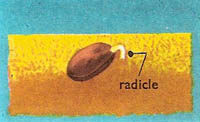 |
| A castor-oil seed germinating in most soil. Water has been absorbed and the seed-coat has split; through the opening thus formed the radicle grows out and turns downward into the soil. |
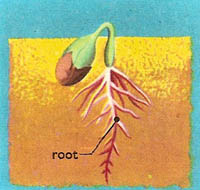 |
| The radicle grows and branches and becomes the main root. |
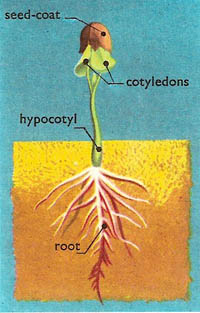 |
| The hypocotyl lengthens and the plumule grows upward into the air, carrying the seed-coat with it. Meanwhile the cotyledons are absorbing the food-store and passing it to all parts of the plant. When the food-store is finished the cotyledons then start opening out and soon become the first leaves. |
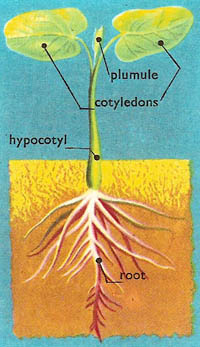 |
| Between the two cotyledons the plumule appears and the cotyledons turn green and start functioning as leaves. The plant can now start to make its own food by photosynthesis with the aid of chlorophyll, and by absorbing salts from the soil. |


